Getting to Ayutthaya from Bangkok is a breeze, there are no shortages of trains, buses, minivans, boats, private drivers or tours to take you. I opted for the train, and the cost for my ticket was a whopping 13 baht, or 50¢. I planned to stay a few days to check out the ruins, the theatre at the floating market and the night market.
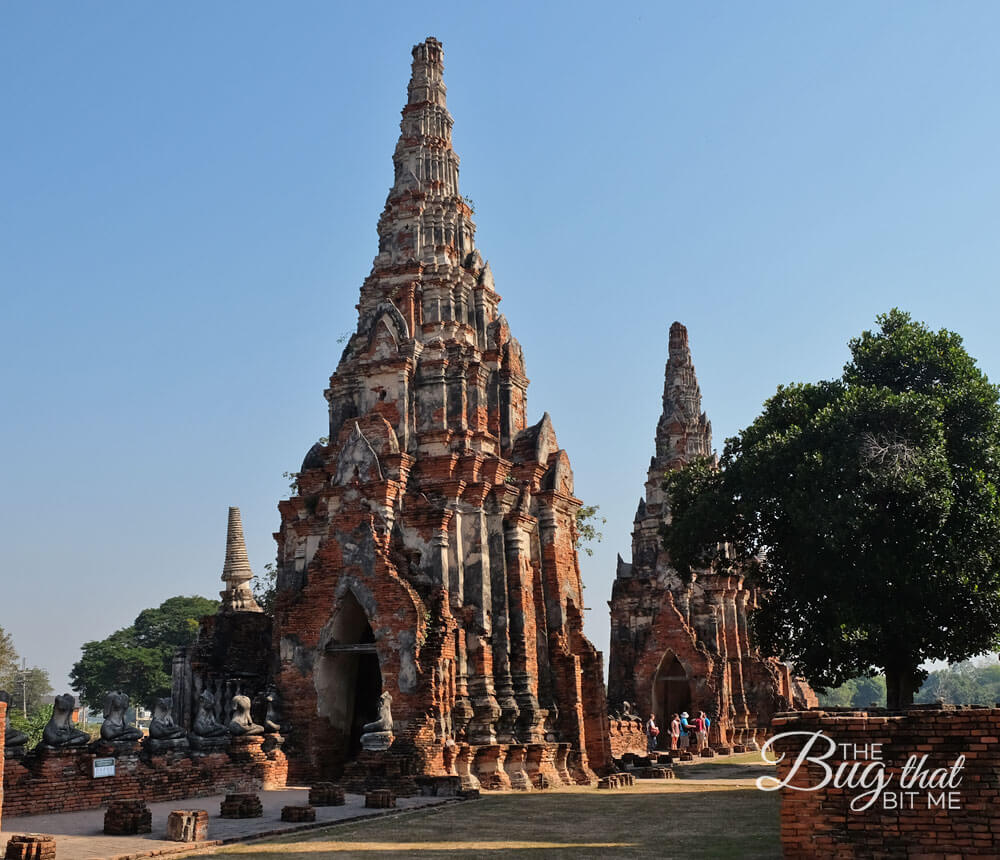
Wat Chaiwatthanaram, Ayutthaya
I ended up at Good Luck Guesthouse and couldn’t have chosen better. The staff spoke English well, they were warm and friendly, and my room was comfortable, inexpensive and massive. It cost 750 baht/night and included a washroom with a hot shower and air conditioning, which was appreciated, as it was hot.
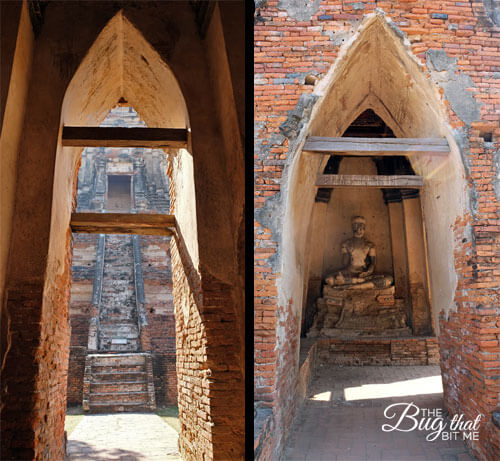
Wat Chaiwatthanaram, Ayutthaya
The ruins in this ancient city are quite spread out around town. While it’s certainly possible to walk to some of them, given the space between the sites and the heat, I would recommend either renting a bicycle, a motorbike, or a driver for a few hours. I started out early in the morning and chose to take a motorbike taxi to Wat Chaiwatthanaram, quite ways away. The cost was a reasonable 50 baht, but I didn’t plan very well. When I was finished looking around, I couldn’t hail another bike, so I was stuck with a tuk-tuk.
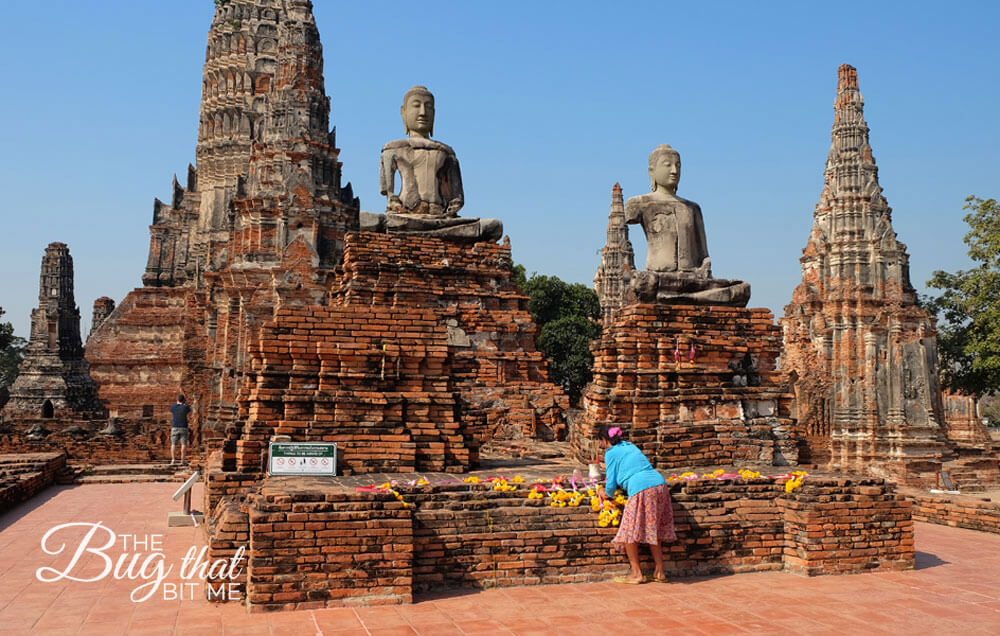
Offerings at Wat Chaiwatthanaram, Ayutthaya
The tuk-tuk driver offered to take me to 11 temple for 300 baht. Seemed too good to be true. I should have known better, but I did repeat it three times and he agreed, and he spoke very good English. On the way to the first temple, I got transferred to another driver who spoke no English, but he did have a photo list of the temples and I pointed to which ones I wanted to see.
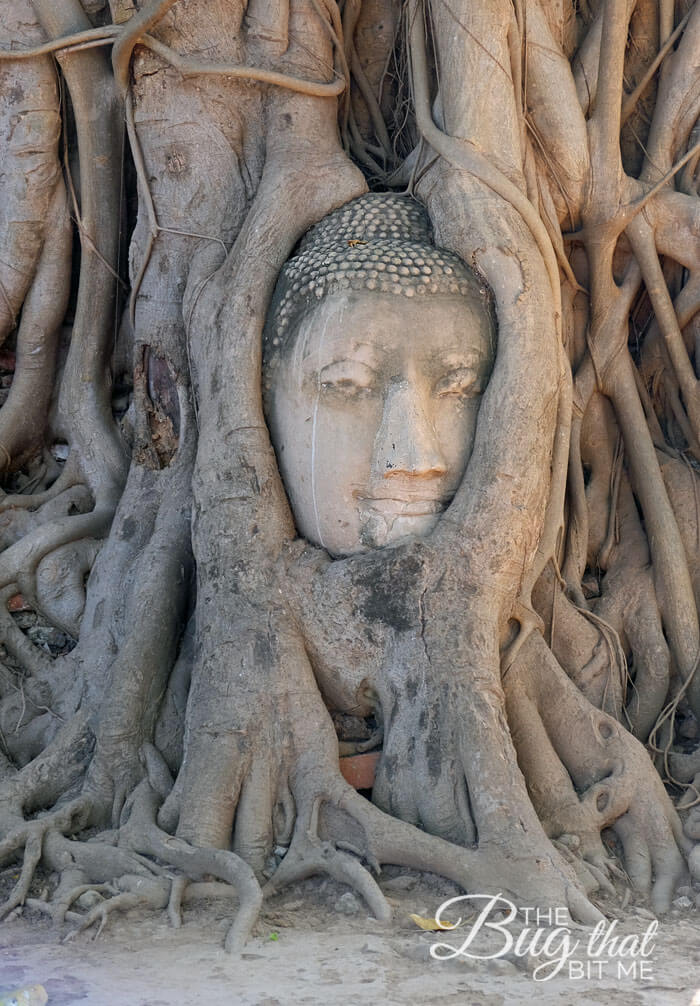
Buddha head in bo tree roots at Wat Mahathat, Ayutthaya
I spent three hours looking at 8 temples. When he dropped me off, I gave him his 300 baht and was told it was 300/hour. Sigh. Damn tuk-tuk drivers. We called the first guy, but I couldn’t make out a word he was saying over the phone. We agreed on 500 baht as a final price and both left happy. I was okay with the final cost of $19.
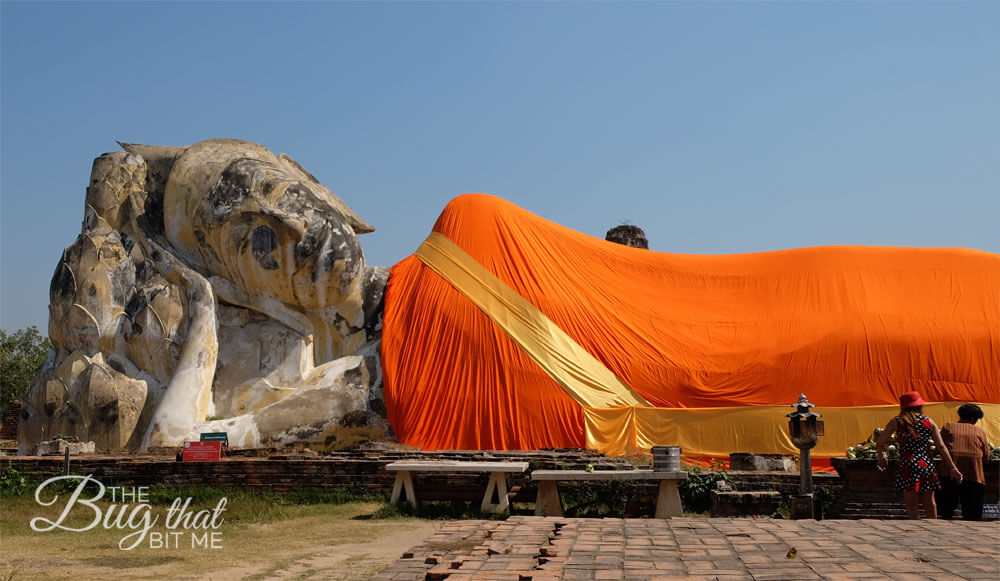
Giant Reclining Buddha at Wat Lokayasutharam, Ayutthaya
Another popular way to see the sites is to renting a bike, either pedal or motorized. It won’t set you back much, and if you’re okay with sharing the road with madmen, have at it! I found it exceptionally hot once 11:00 am hit and would not have wanted to be pedalling a bike around. I was grateful that I could cool off between sites in the back of the tuk-tuk.
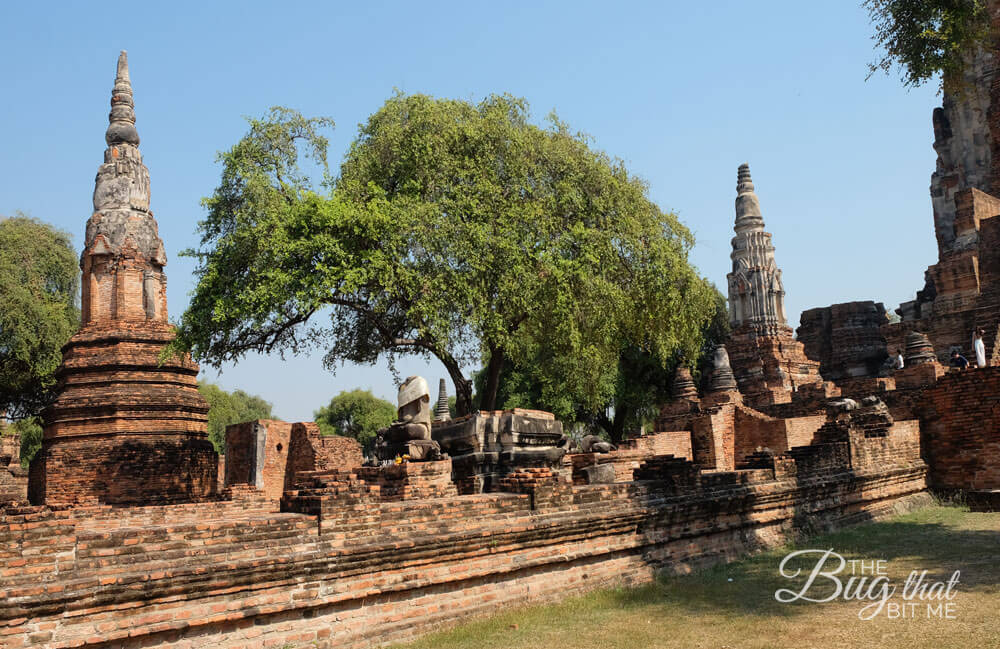
Wat Phra Ram, Ayutthaya
I was in Ayutthaya shortly after New Year’s and all the sites were free to get into except Wat Phanan Choeng Worawihan. If you do have to pay, most sites will cost you 30-50 baht. They are open daily from 8:00-6:00.
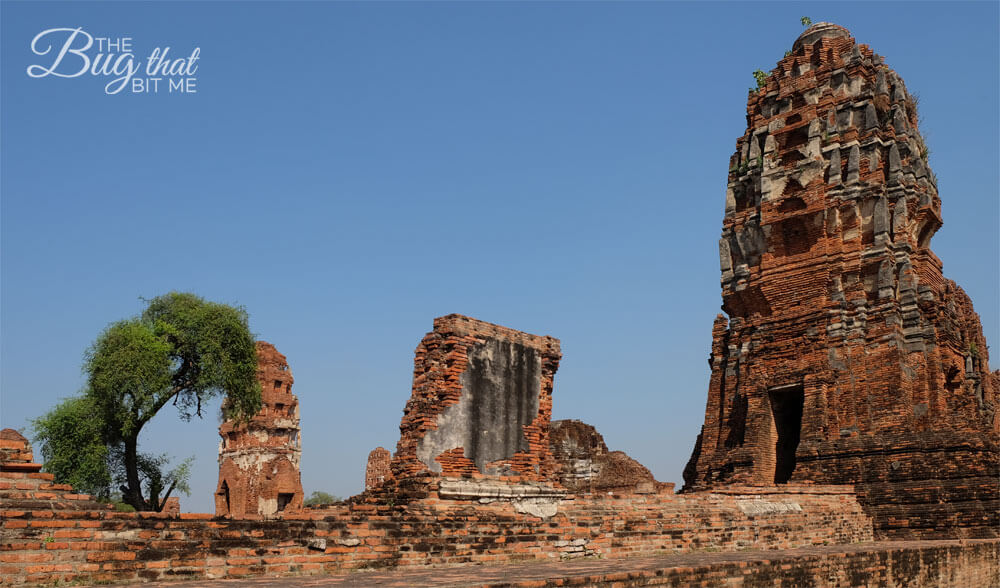
Wat Mahathat, Ayutthaya
The ruins of Ayutthaya are amazing. Dating back to 1350, it was the second Siamese capital after Sukhothai. The city prospered for over 400 years until it was destroyed by the Burmese in 1767. Prior to this, Ayutthaya was a city of global importance to commerce and diplomacy. Ideally situated between East and West, Foreign ambassadors from countries far and wide came to the court and even lived in the city, and their influence is seen in the art and architecture. After the Burmese burned the city to the ground, they forced the inhabitants out and it was left vacant.
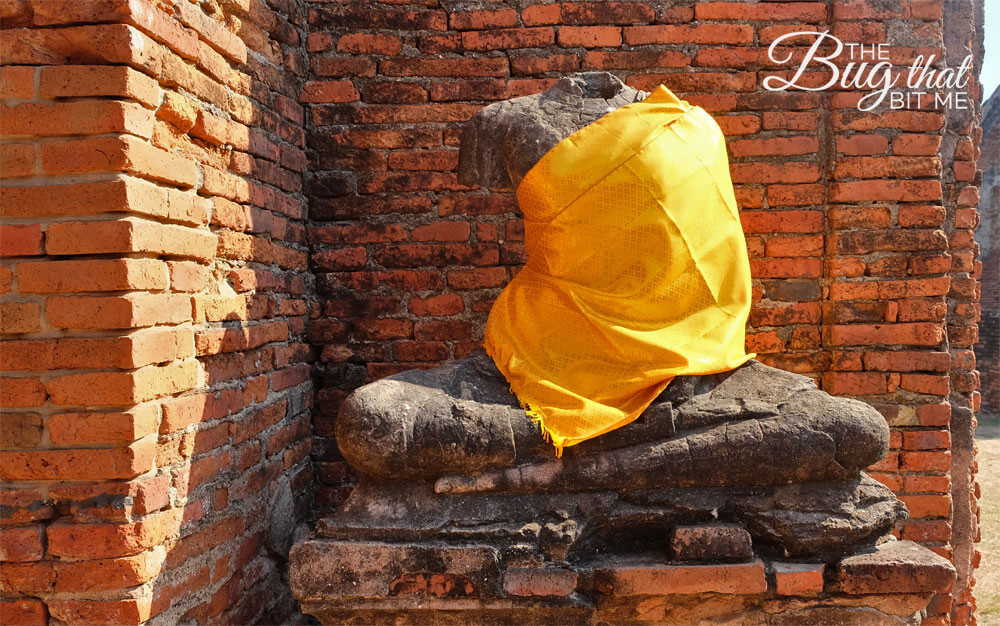
Buddha at Wat Chaiwatthanaram, Ayutthaya
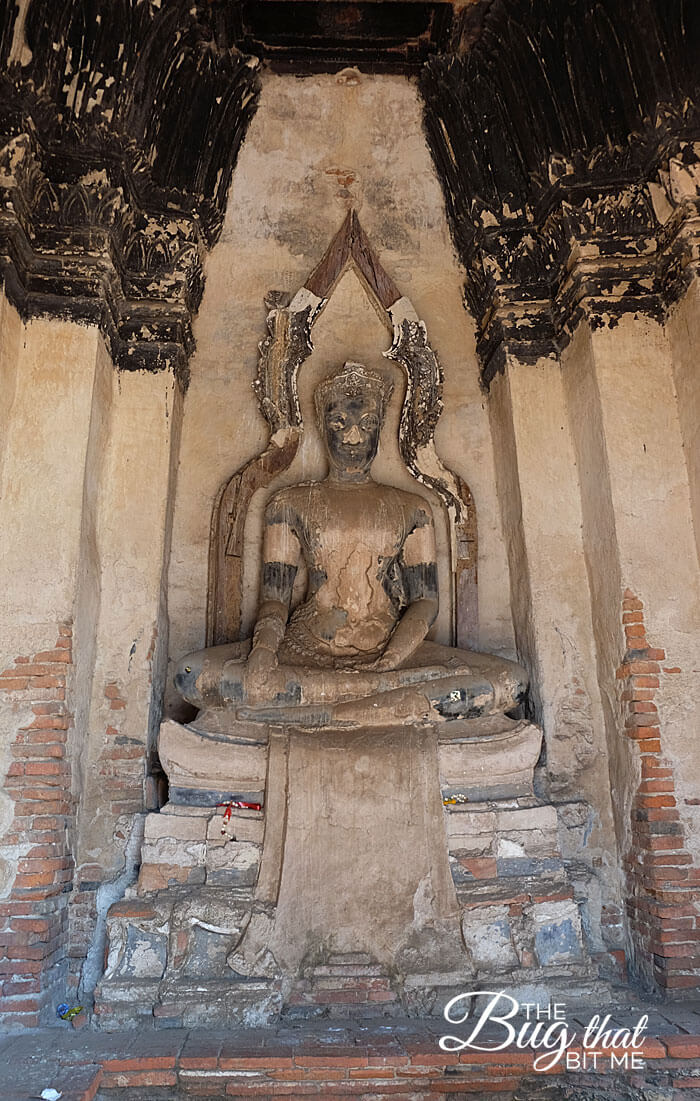
Wat Chaiwatthanaram, Ayutthaya
Renovations of the ruins began by the Thai government in 1969. When the area was declared a historical park in 1976, work began more seriously. In 1991, UNESCO declared part of the park a World Heritage Site stating that it bore excellent witness to that period of true national Thai art. Severe flooding in 2011 damaged the ruins further and restoration work continues.
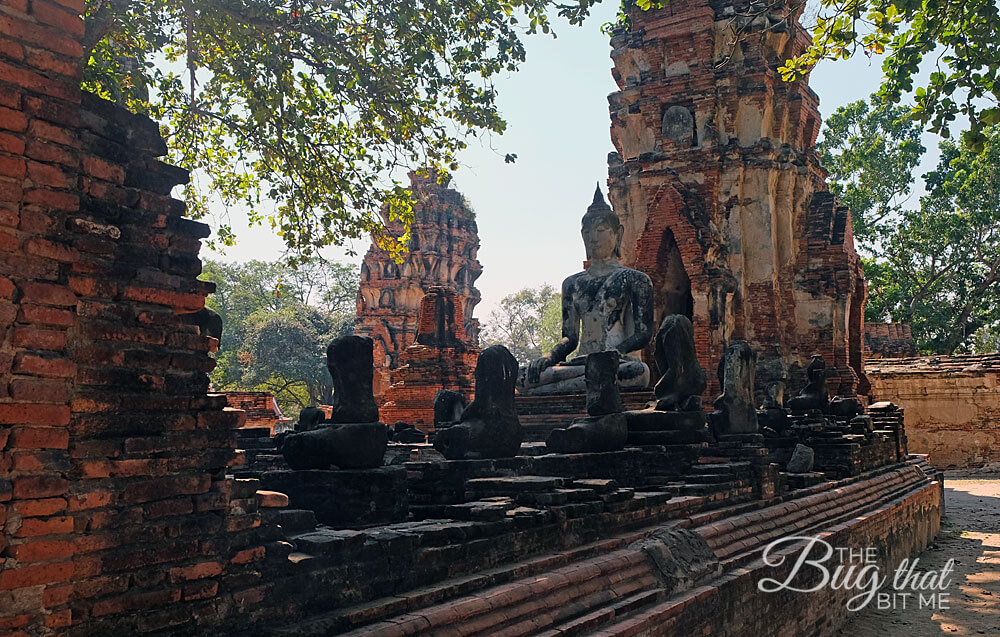
Wat Mahathat, Ayutthaya
Wat Chaiwatthanaram
Wat Chaiwatthanaram is one of the most visited sites at Ayatthuya and was one of my favourites. The Royal Buddhist temple was commissioned in 1630 in honour of the king’s mother’s homeland, and is in the traditional Khmer style. Heavy flooding in Thailand in 2011 increased the conservation problems at Wat Chaiwatthanaram, elevating its status to a site in need of immediate attention. This outstanding temple is not protected by UNESCO, as it lies on the Chao Phraya River outside Ayutthaya island, but it is getting the attention it needs. A visit early in the day is very pleasant, allowing time to take in the main prang and pagodas, which are still in quite good shape. The site is on the riverbank and can be reached by road and boat.
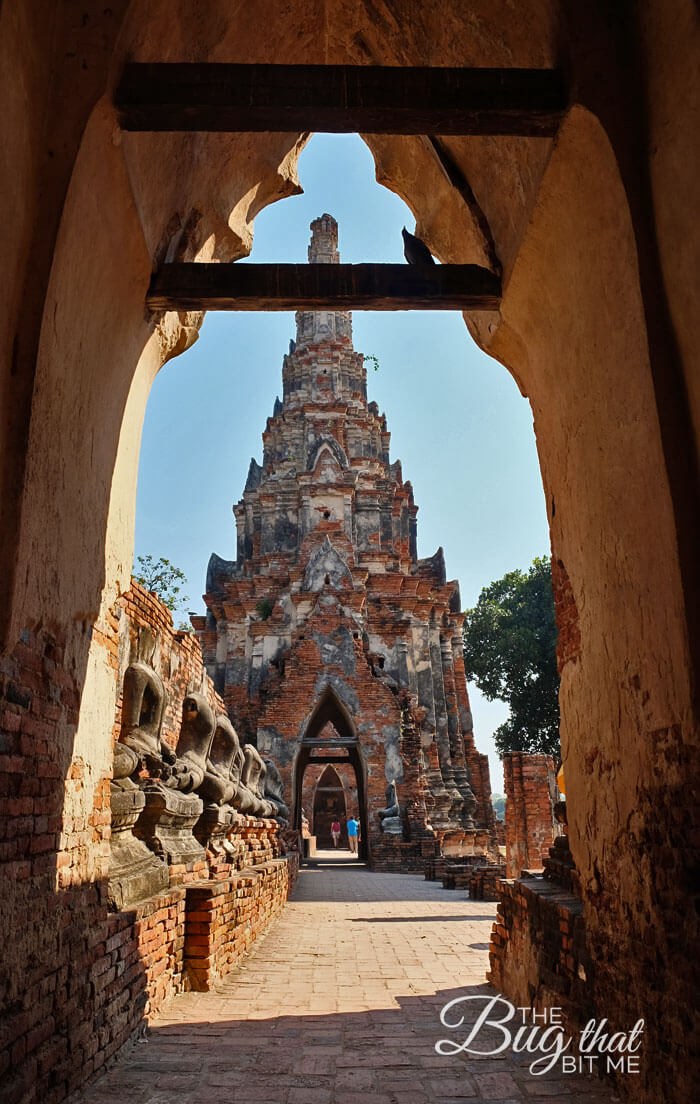
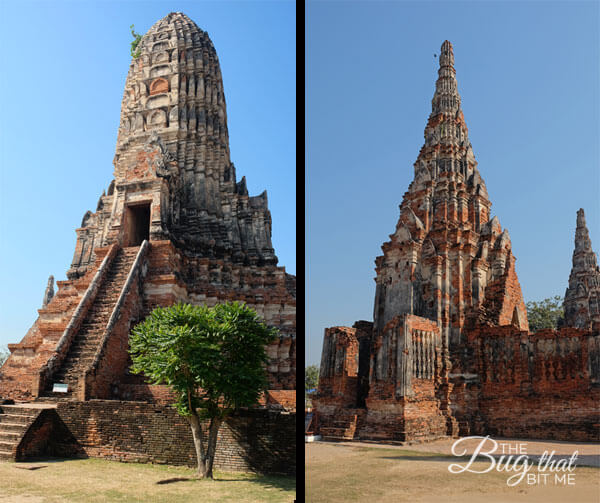
Wat Phanan Choeng Worawihan
Built around 1324, this is a very old temple, and very well preserved. No one knows how long ago it was built, but we know that it was built before Ayutthaya became the capital. Despite its age, the working temple looks rather modern. The temple grounds are quite large, and today there are several buildings, including a functioning monastery.
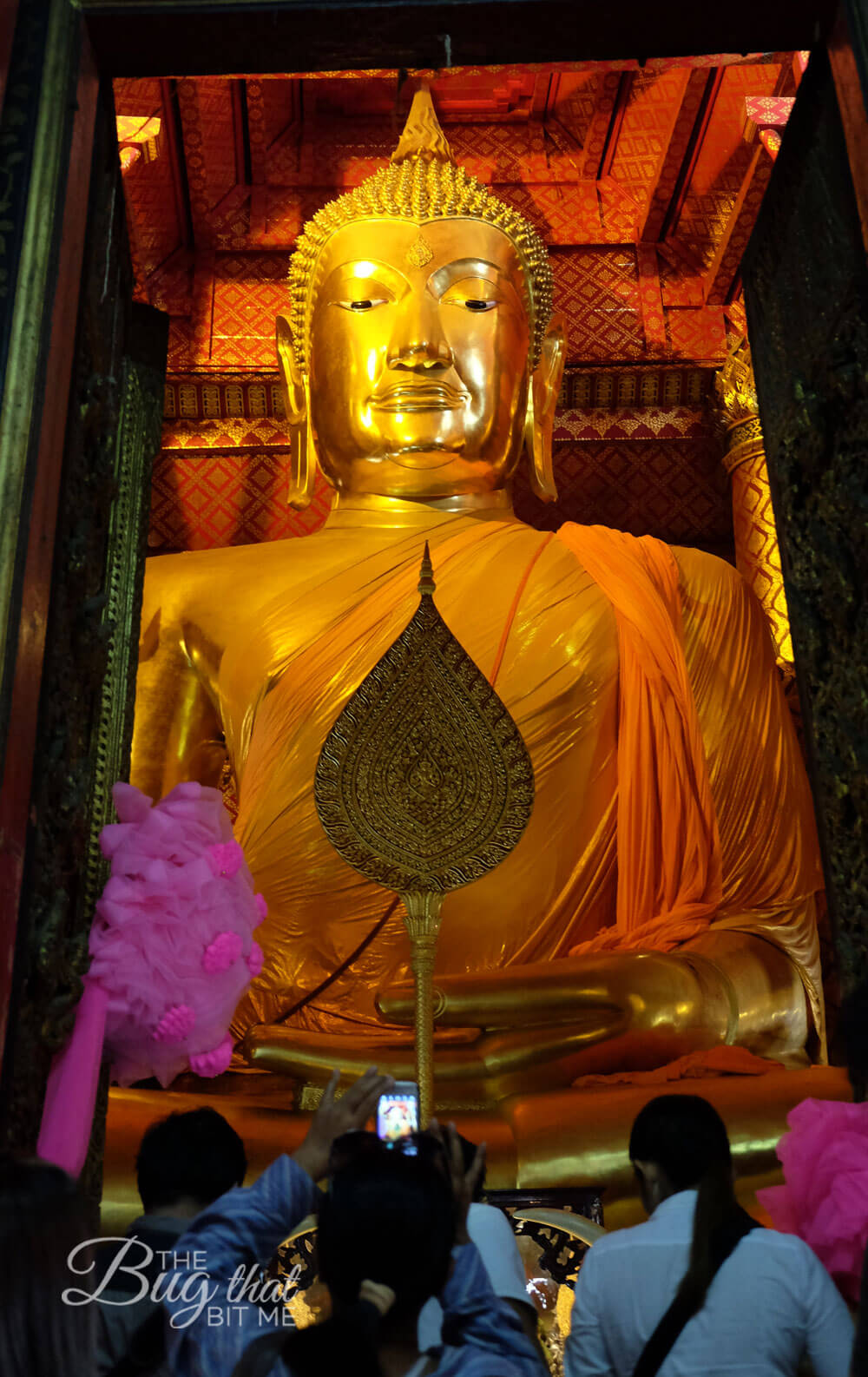
The large monks’ residence, the highest building in the temple complex, holds a huge gilded 19-meter seated Buddha that dates from 1334. This Buddha is highly revered and is regarded as a guardian for mariners. As legend has it, before the destruction of Ayutthaya by the Burmese, tears flowed from Buddha’s sacred eyes to his navel. The statue has been restored several times in history.
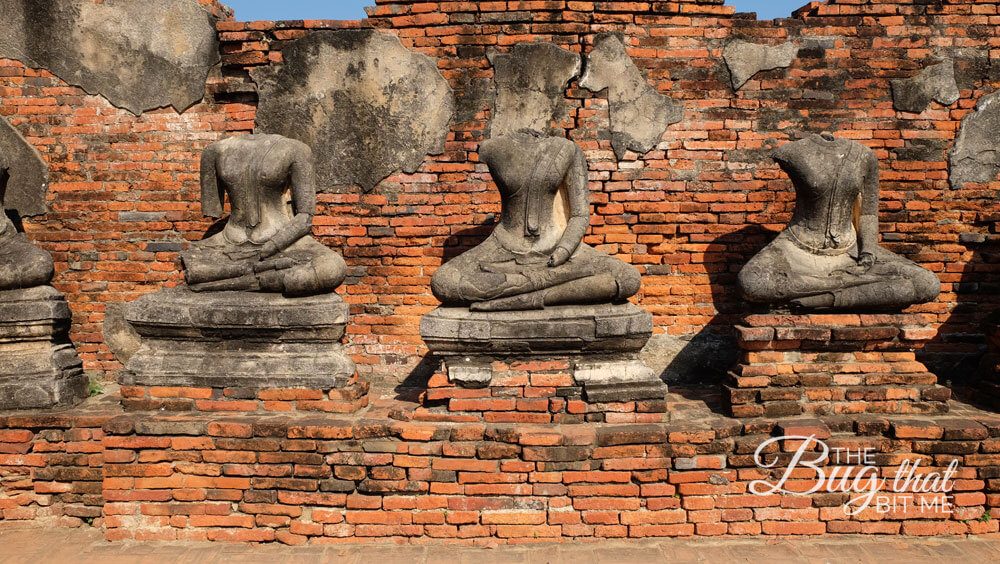
Wat Phanan Choeng Worawihan, Ayutthaya
This temple was packed with Chinese worshippers. In fact, I was the only non-Chinese person I could see. I was told that many worship this particular Buddha statue as it is well-known to bring you prosperity if you do. There were several “money trees” around the grounds where one could donate funds by clipping them on the tree. Other than the beautiful Buddha, I did not find much of interest here. As you can see in the photo, it was rather difficult to get anywhere near the statue with the throngs of worshippers.
Wat Lokayasutharam
The important feature Wat Lokayasutharam is a huge reclining Buddha image called Phra Bhuddhasaiyart. It was constructed of bricks and plaster in the art style of the Middle Ayutthaya Period. It is 37 meters long and 8 meters high. There are a few Reclining Buddha images in the area, but this is the largest, and is quite beautiful. Buddha’s head rests on a lotus, and the legs overlap, meeting up at the perfectly squared off toes. Women walk around selling incense, flowers and gold leaf squares for those wanting to make an offering.
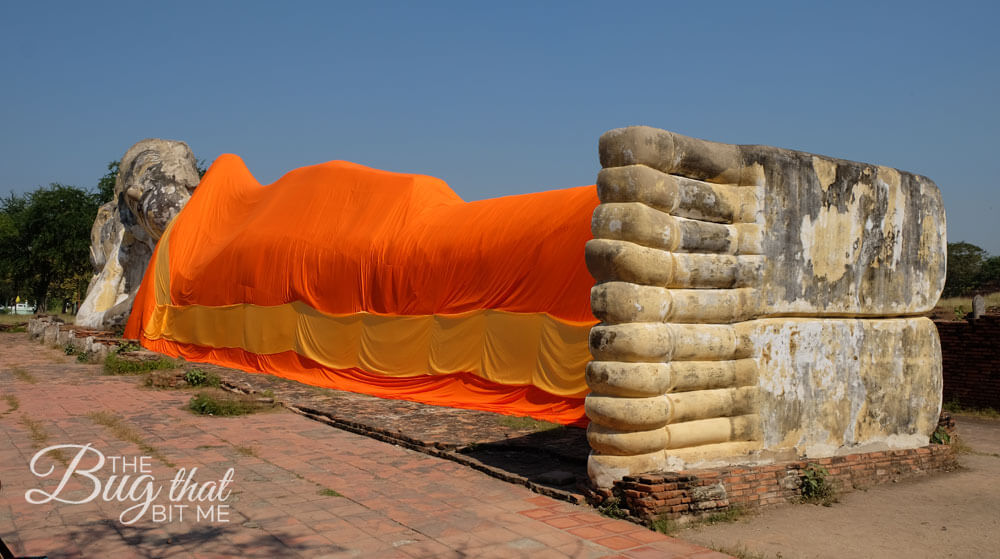
Behind the Reclining Buddha are scattered remains of other temple buildings, but there is little worth seeing. On the opposite site of the road from the Buddha image is an overabundance of overpriced food stalls and souvenir shops. I couldn’t help myself and bought a stupidly expensive popsicle. Despite this site not having a lot to see, the Buddha statue alone is worth a stop.
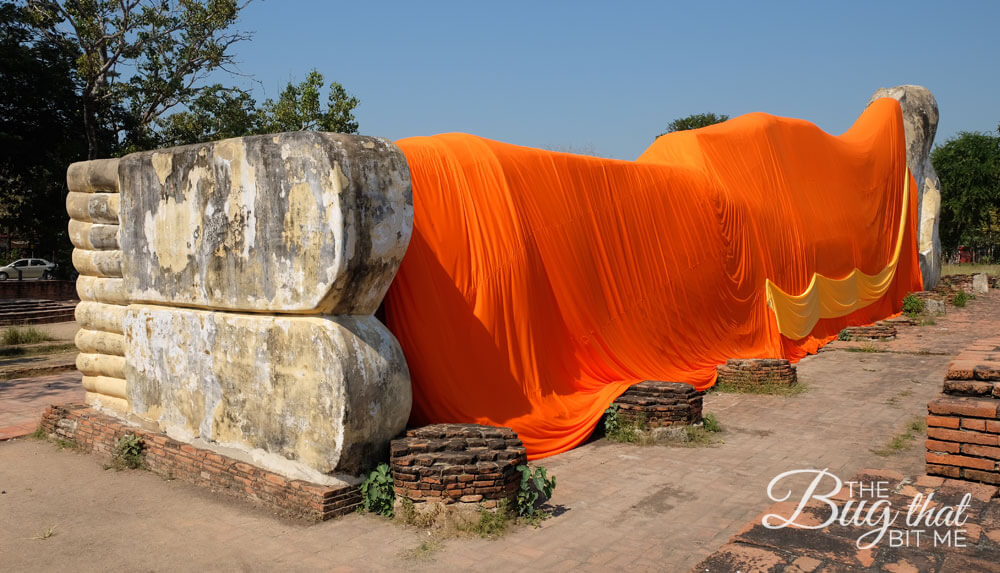
Wat Mahathat
Wat Mahathat was another of the sites I greatly enjoyed. It was built over 600 years ago in front of the Grand Palace, according to the ancient values that there should be great temples around the palace. This temple was the centre of the Ayutthaya people’s faith. Because of this, it was completely burnt down by the Burmese invaders during their final assault of the capital.
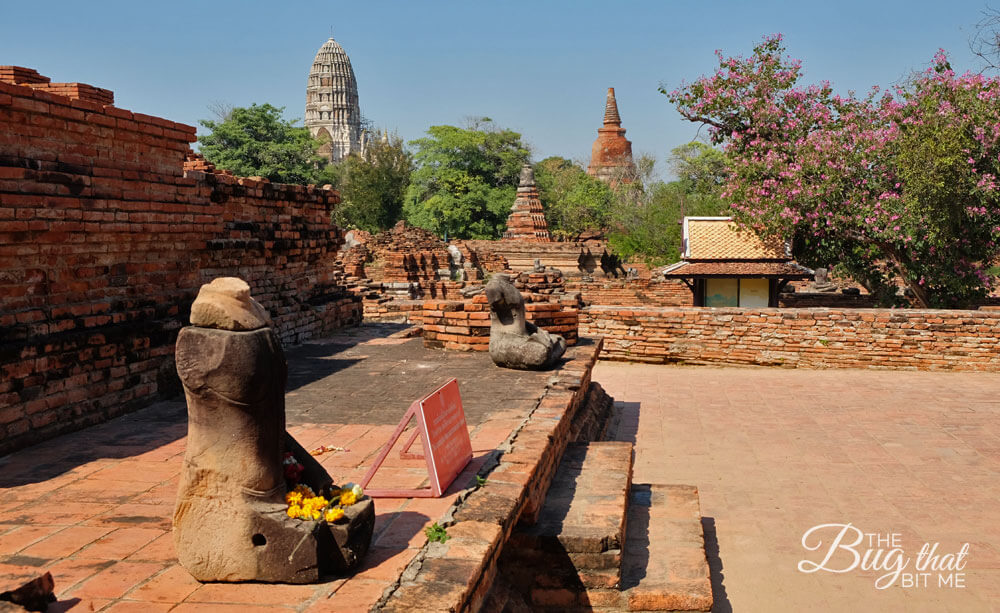
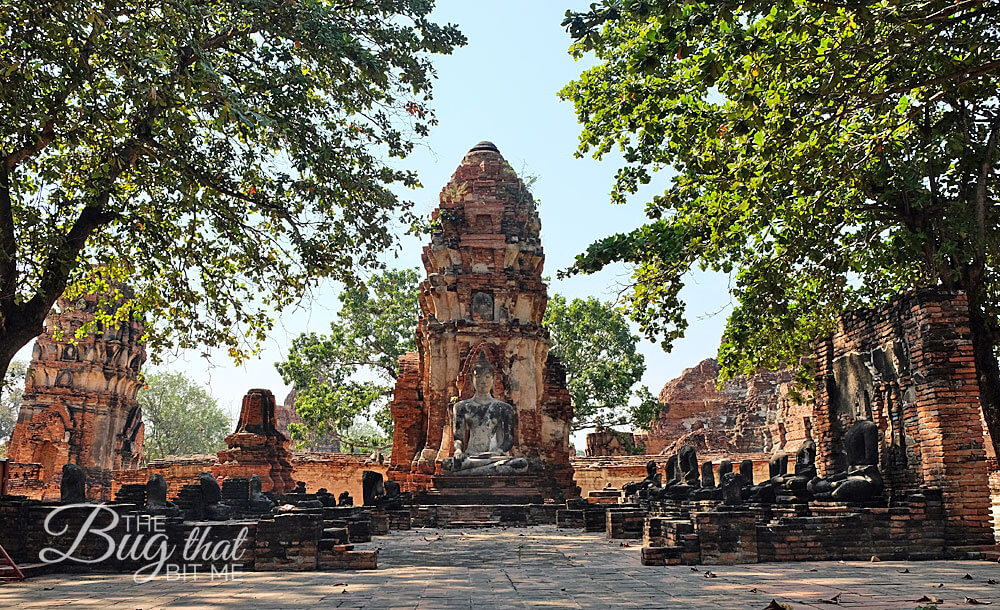
Perhaps one of the most famous images related to Thailand is the Buddha head entwined in the roots of a bo tree. You will find that here at Wat Mahathat.
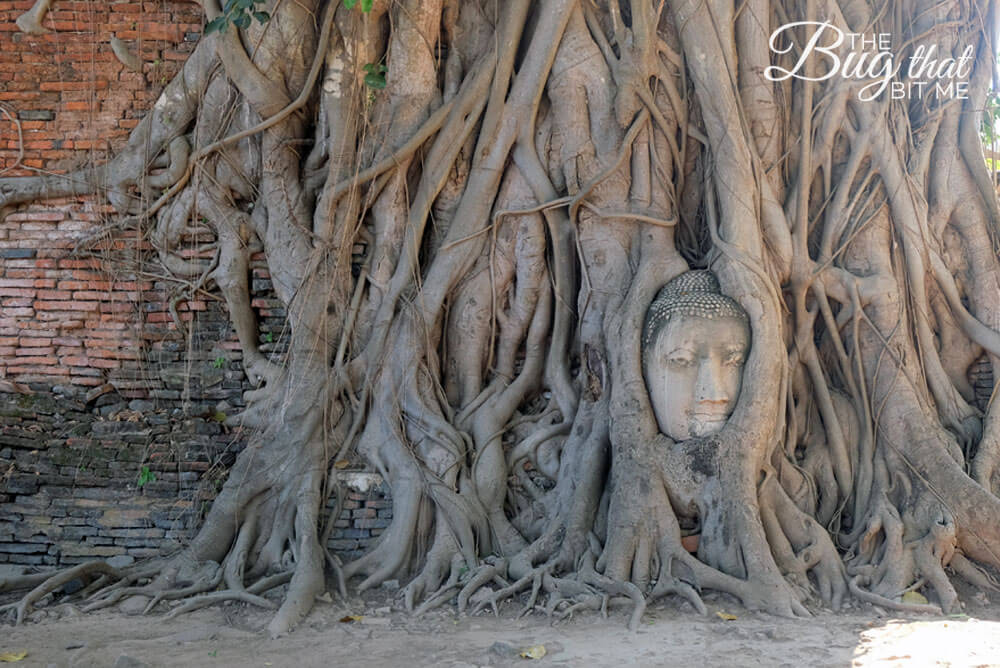
Wat Phra Ram
King Ramesuan ordered the construction of Wat Phra Ram in 1369 at his father’s cremation site. A major renovation of is presumed to have been undertaken in the reign of King Borommatrailokanat, and then another major restoration took place in 1741 in the Late Ayutthaya Period. The temple compound houses a large prang and many chedis. In front of the temple, a large pond was dug out.
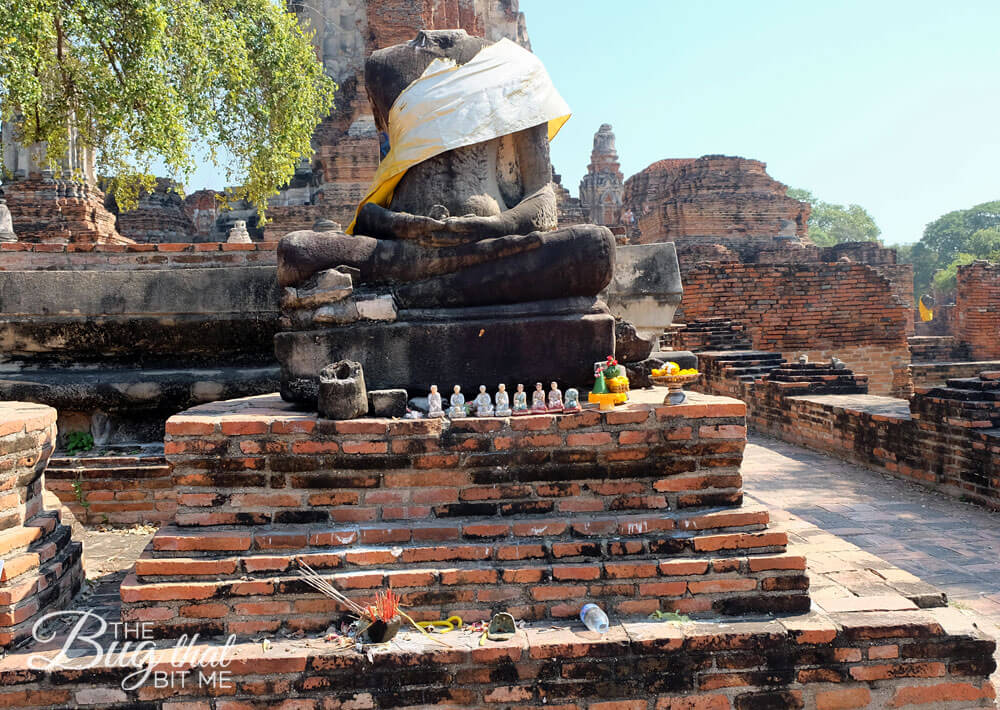
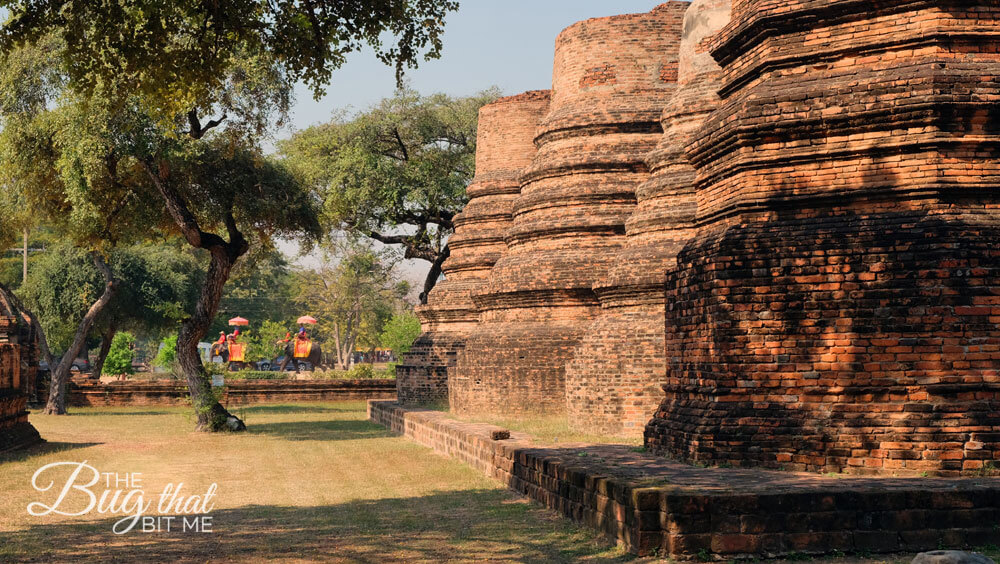
Wat Phu Khao Thong
Wat Phu Khao Thong or the Monastery of the Golden Mount is another site I very much enjoyed exploring. It is located off the city island in the plains northwest of Ayutthaya. The entryway is flanked by several holy roosters (I have no idea as to the relevance, despite asking several people. Care to fill me in?), adorned with jasmine and marigolds. As you approach the site, the well-preserved chedi rises imposingly.
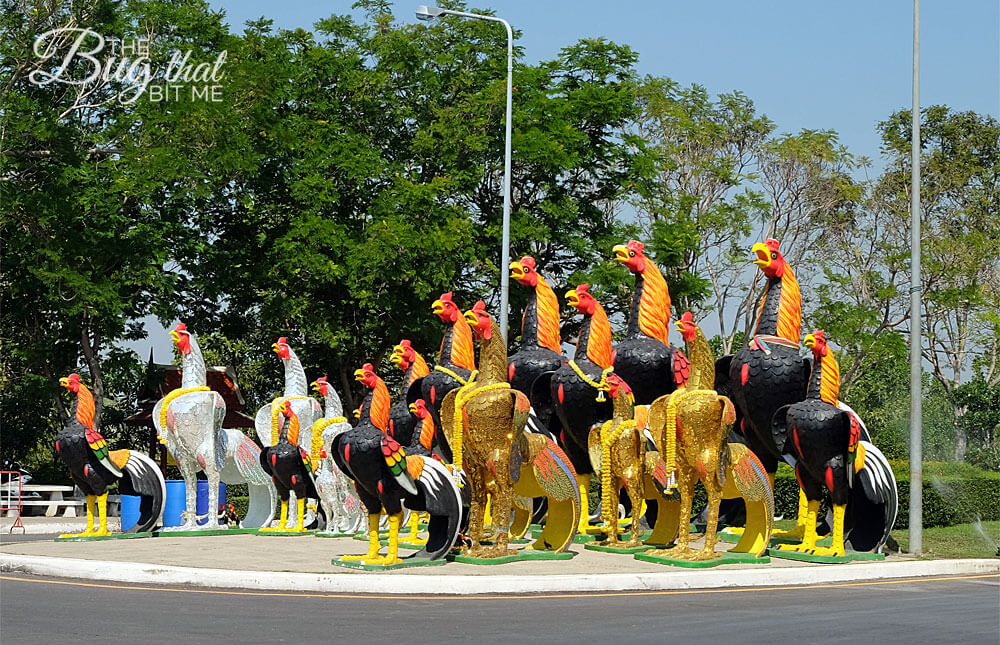
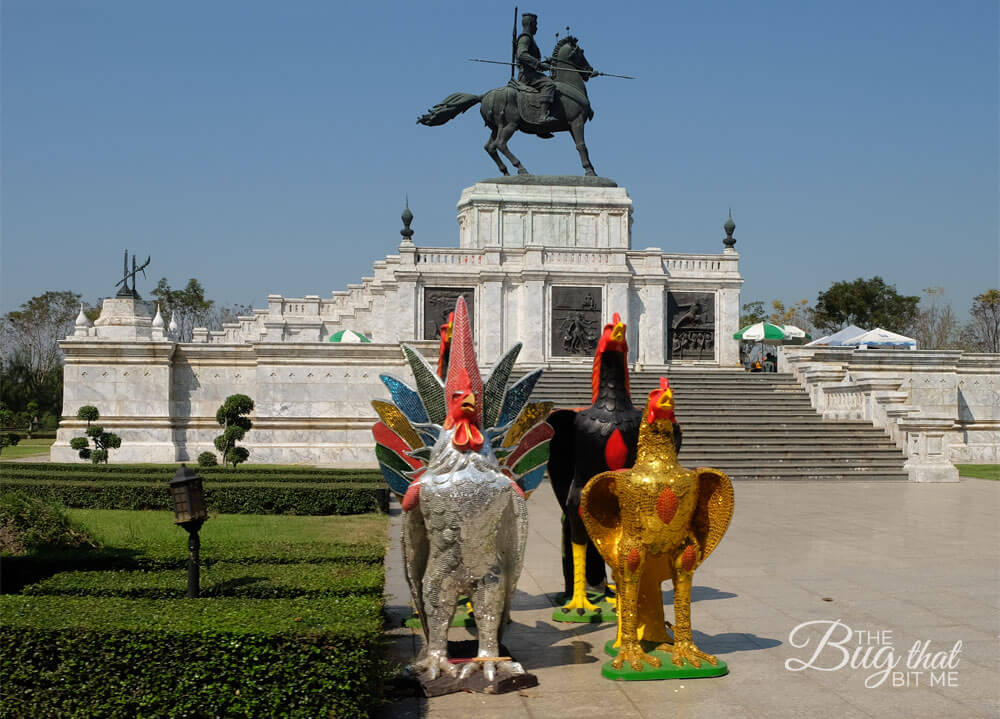
The monastery was built by King Ramesuan in 1395. The temple’s name refers to the high chedi on its north east side, but at the time of the construction of the monastery, this chedi was nonexistent, so the temple likely had another name.
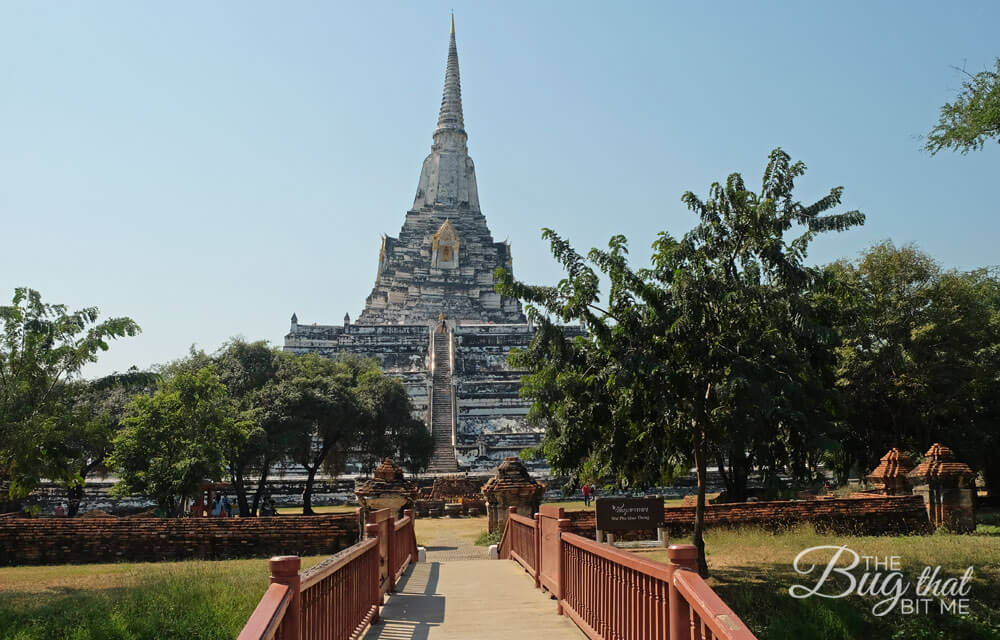
In 1568 a large Burmese army invaded Siam and positioned itself around Ayutthaya. Seven months later, the invading Burmese forces ransacked and plundered the city. The Burmese King remained at Ayutthaya to witness the coronation of his vassal, and started the building of a Mon-Burmese-styled chedi to commemorate his victory, but because he returned home, the victory monument and the chedi was never finalized.
In 1587, a Thai style chedi was built on top of the base to commemorate Ayutthaya’s newly declared independence and victory over the Burmese.
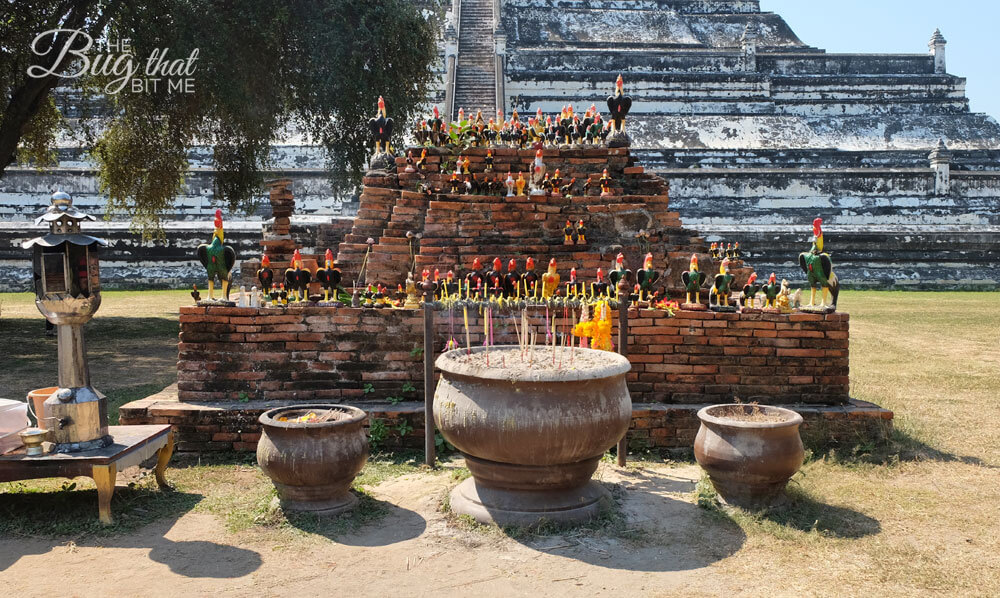
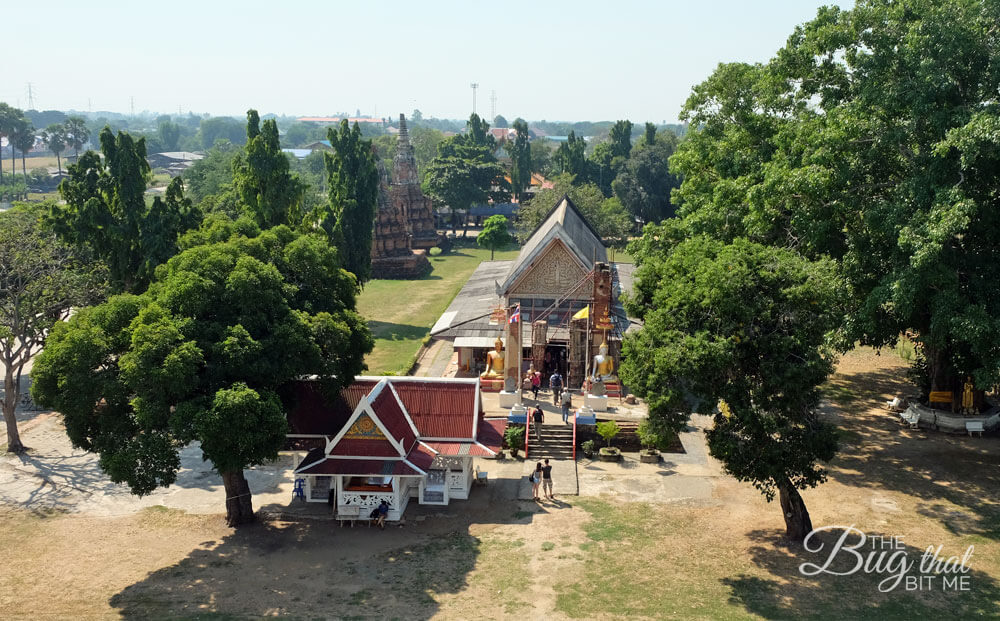
Before you reach the chedi, there is an area for workshipping and making offerings. This chedi is in good enough shape that climbing is allowed, and you’ll be rewarded with a wonderful view of the countryside. Behind the site, a small temple has been built on the ruins of an old one. Inside is a shrine, some interesting paintings in desperate need of repair, and a small cave flanked with the upper body of a tiger that leads to a Buddha footprint.
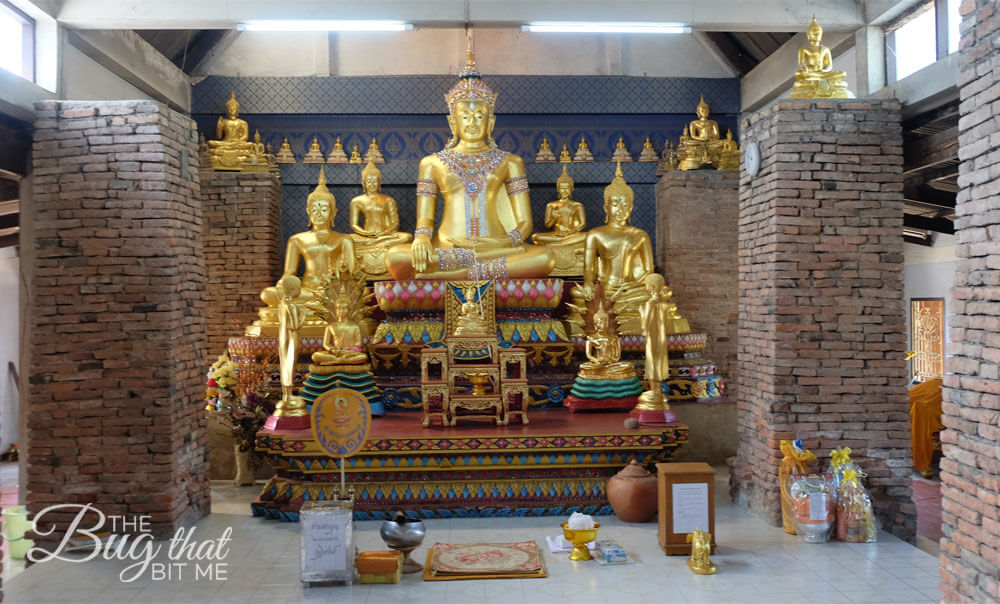
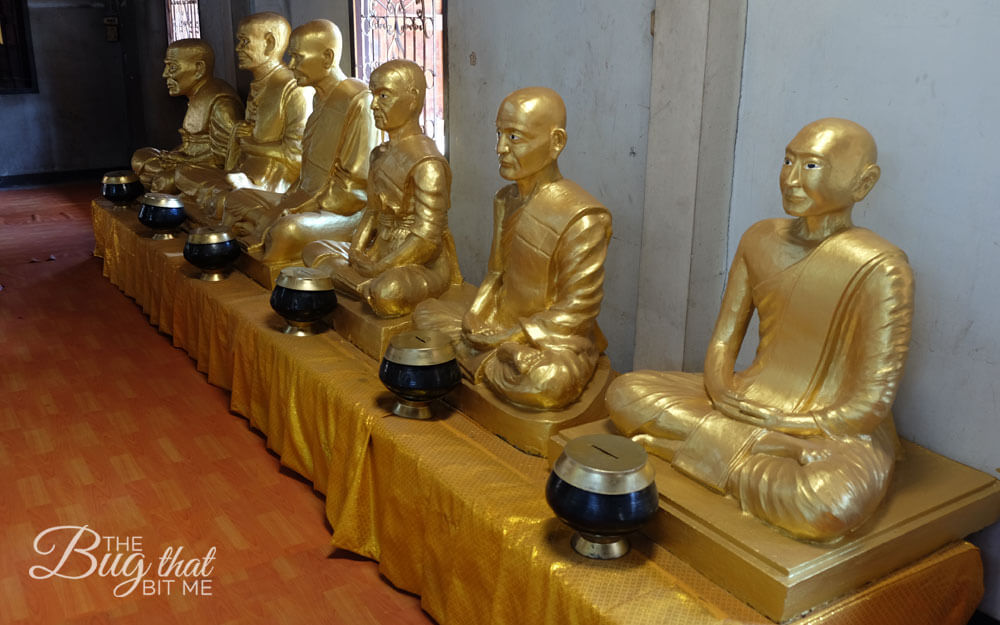
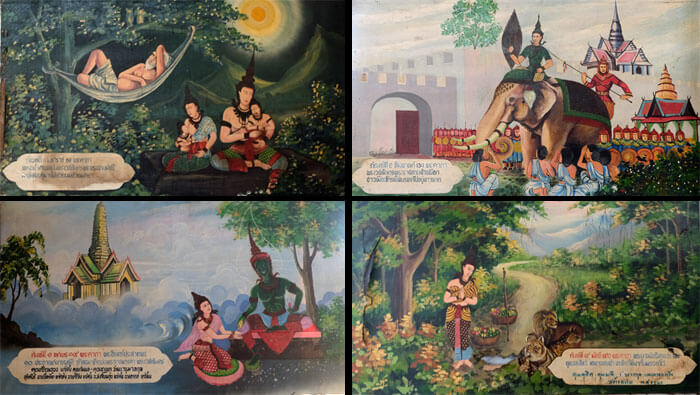
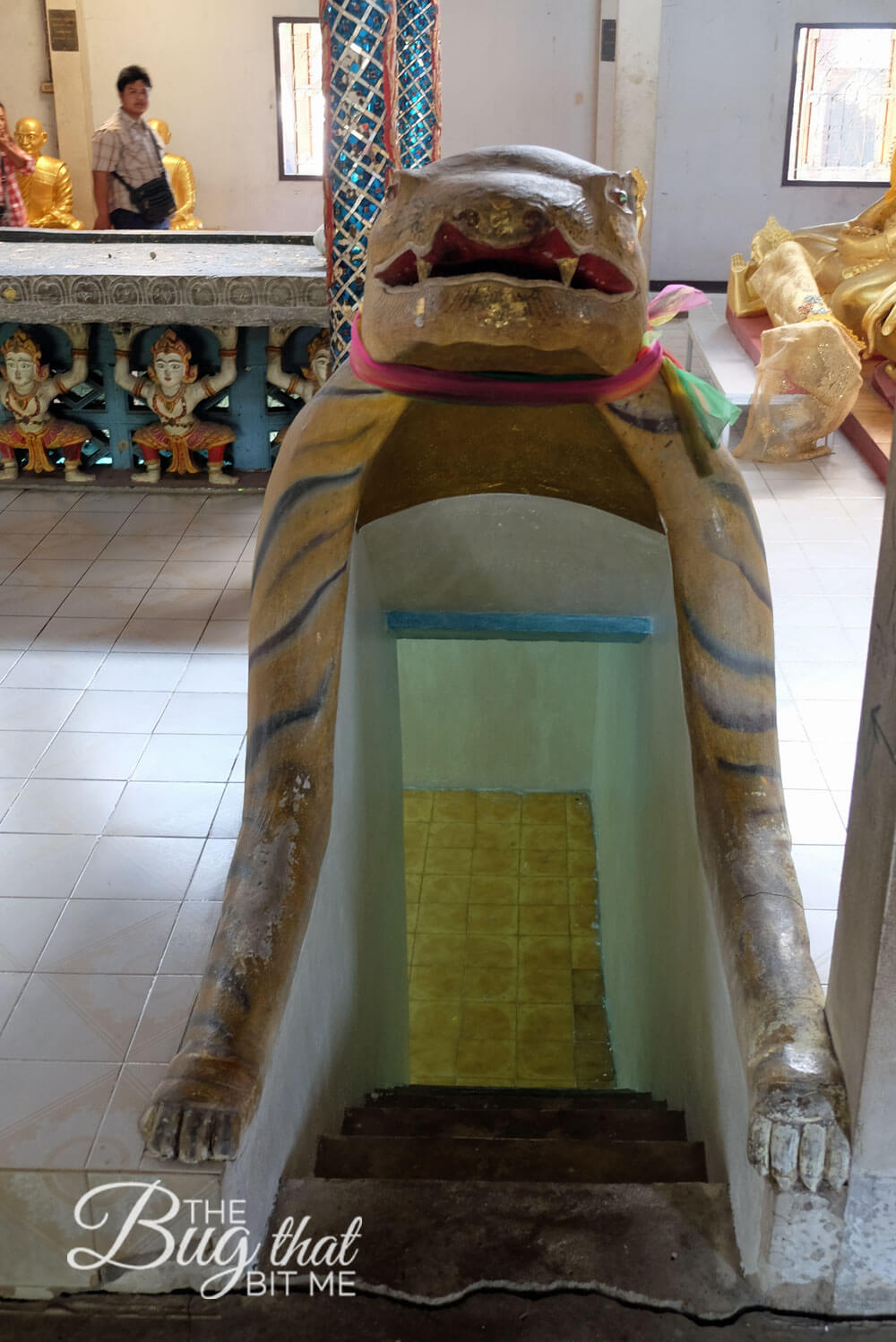
Cave leading to Buddha footprint, Wat Phu Khao Thong, Ayutthaya
Wat Yai Chaimongkol
And last, but certainly not least for me, was Wat Yai Chaimongkol. Despite being hot, tired, and wat-ed out, it was my favourite of the day. It is a magnificent ancient royal monastery that has been the pride of Siamese people since the 13th century.
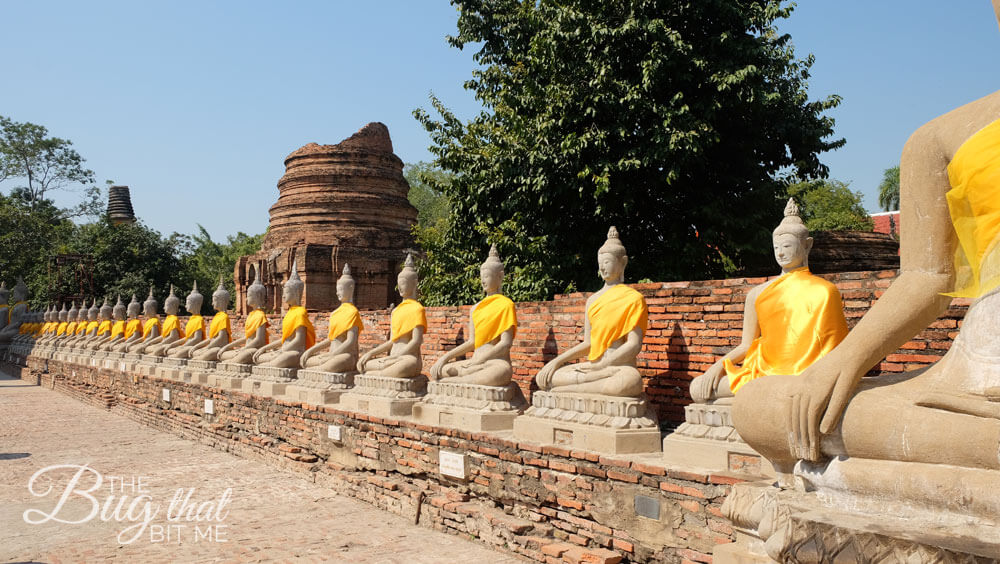
It was built by King U-thong in 1357 for monks returning from studies in Ceylon. Royals and princes sought advice here during the Ayutthaya Period. At one point, Wat Yai Chaimongkol was seized and turned into a fortress, then it became a long-lost temple for a hundred years. In the 19th century, the ancient temple was transformed.
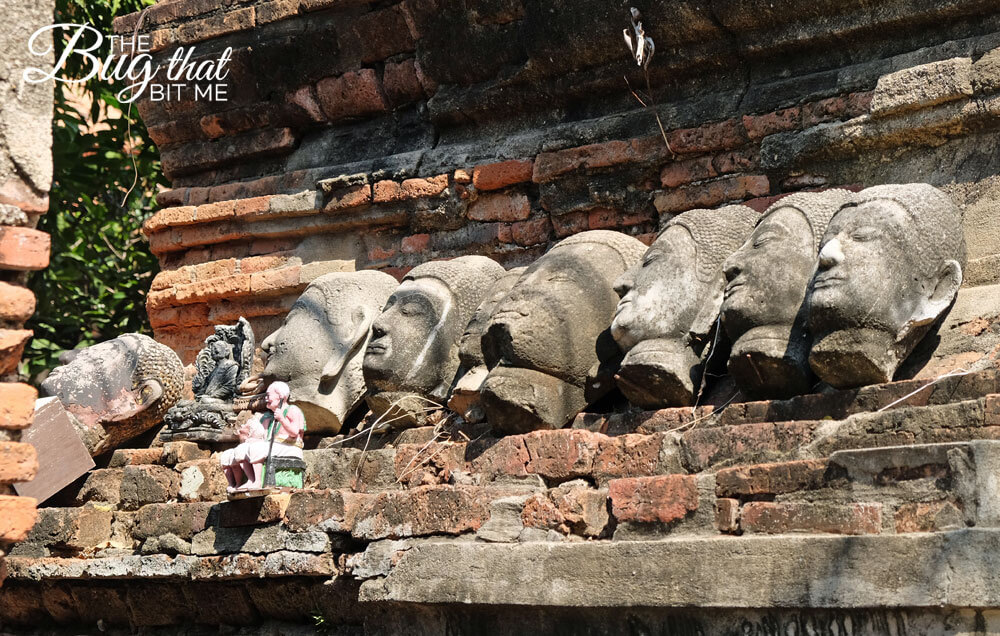
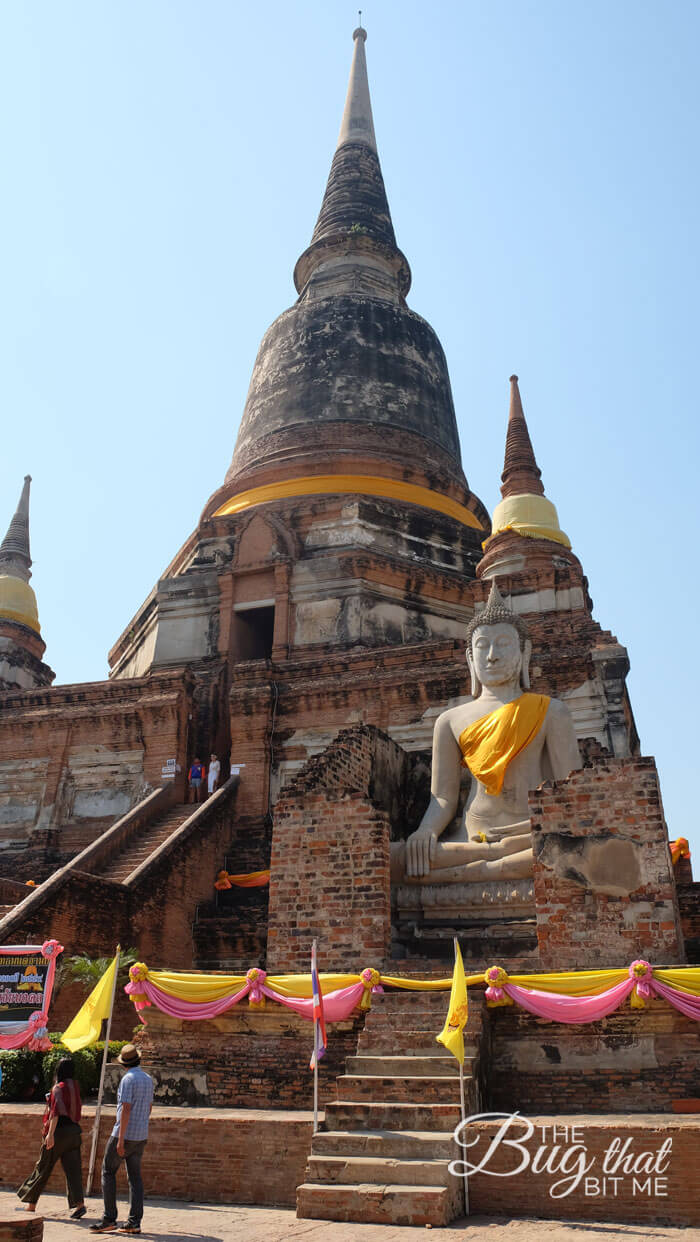
Wat Yai Chaimongkol is in the southeast of the city. The large chedi there can be seen from quite a distance. There are many beautiful seated Buddha statues, and a large Reclining Buddha. The rows of Buddhas are new, replacing those that were damaged through war or time. Ashes of the dead reside in their bases. It is a working monastery, built on the foundation of the old ruins.
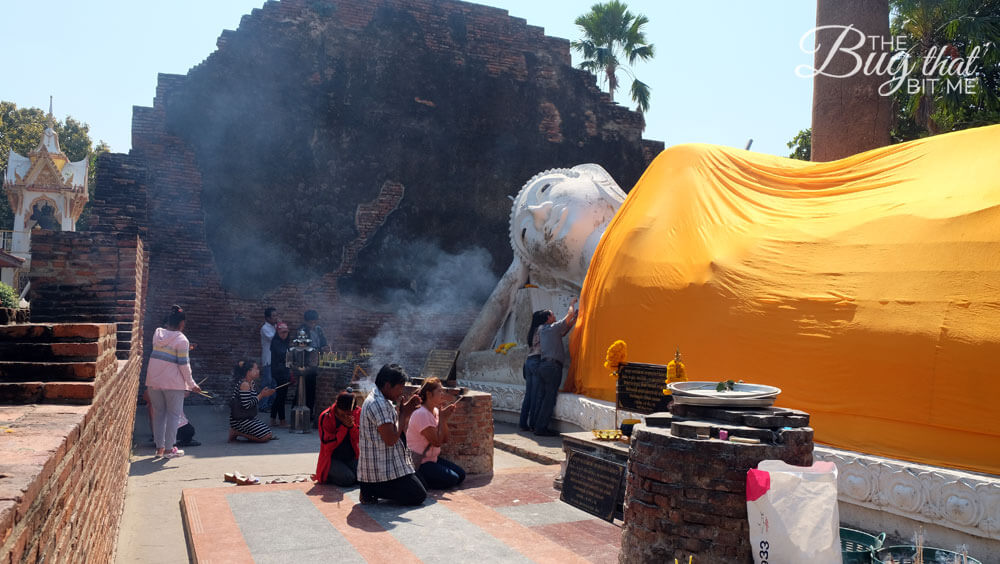
Words of wisdom dangle from the trees, shrines hold a multitude of statues representing various forms of worship, and trees are adorned with colourful sashes. It was a peaceful, beautiful place to end an exciting and exhausting day of exploring.
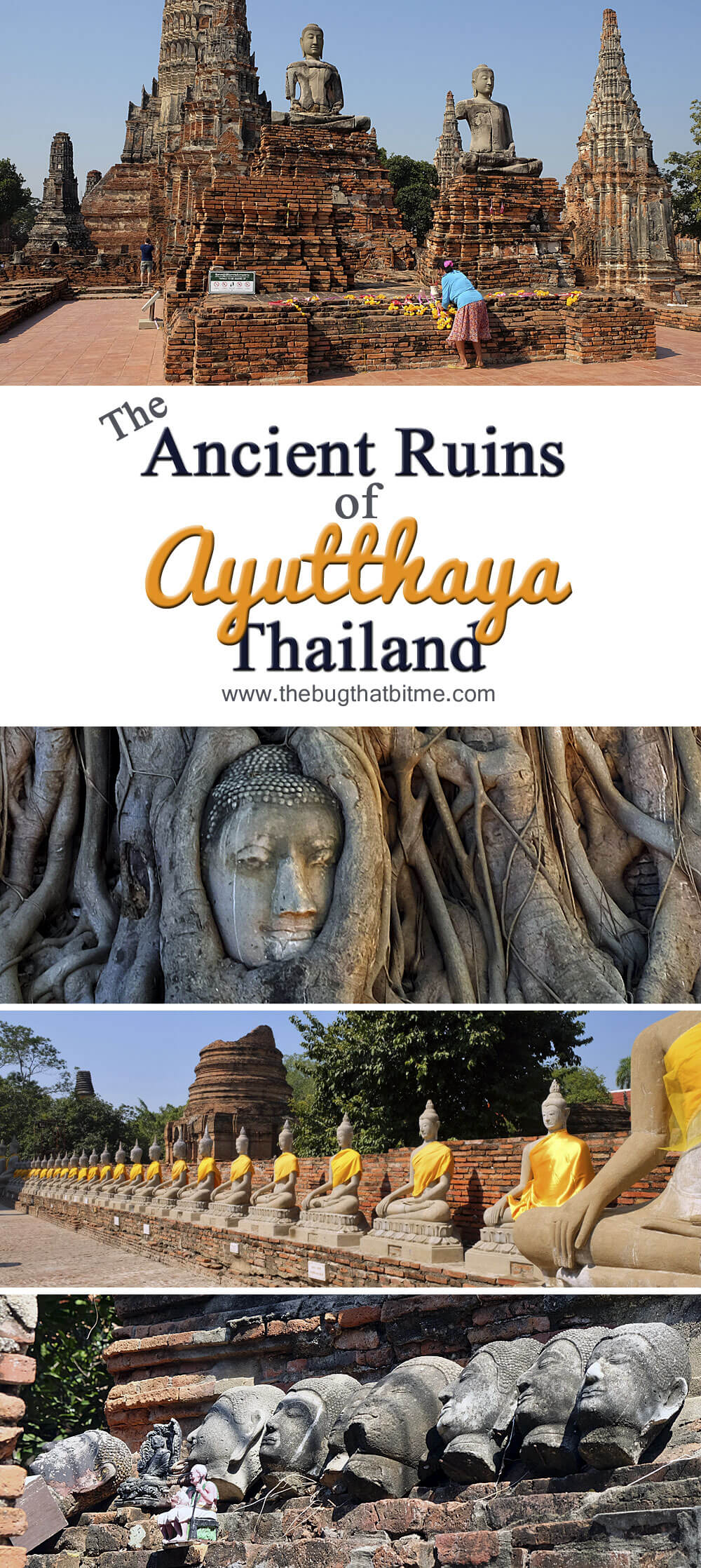
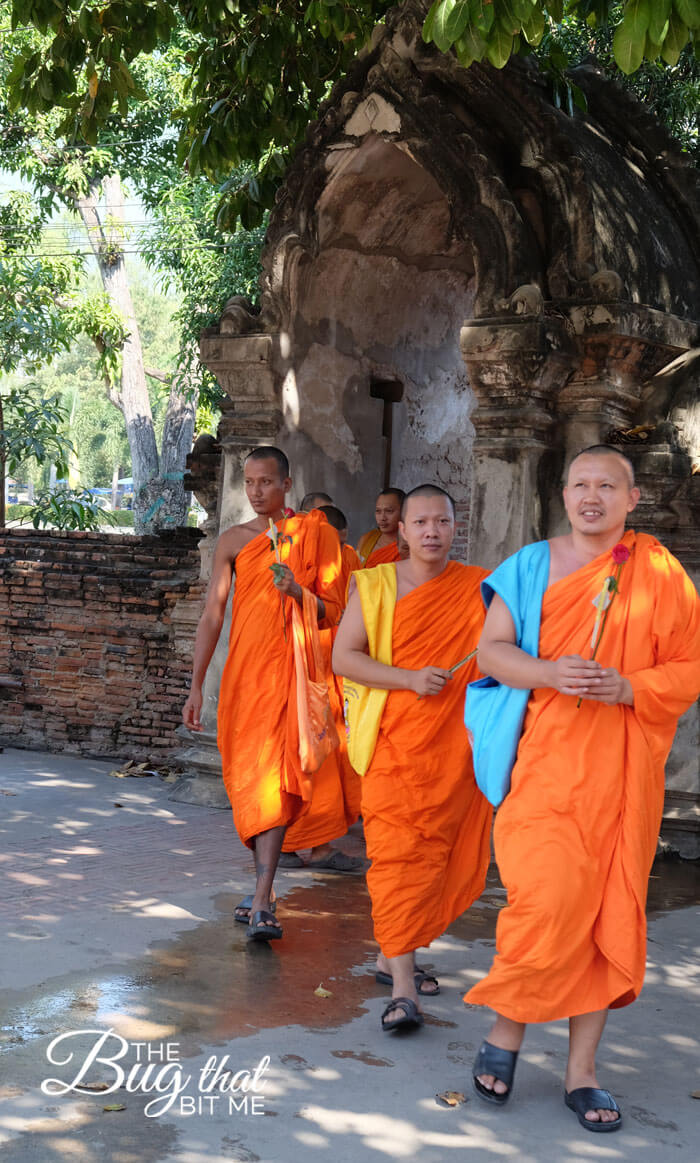
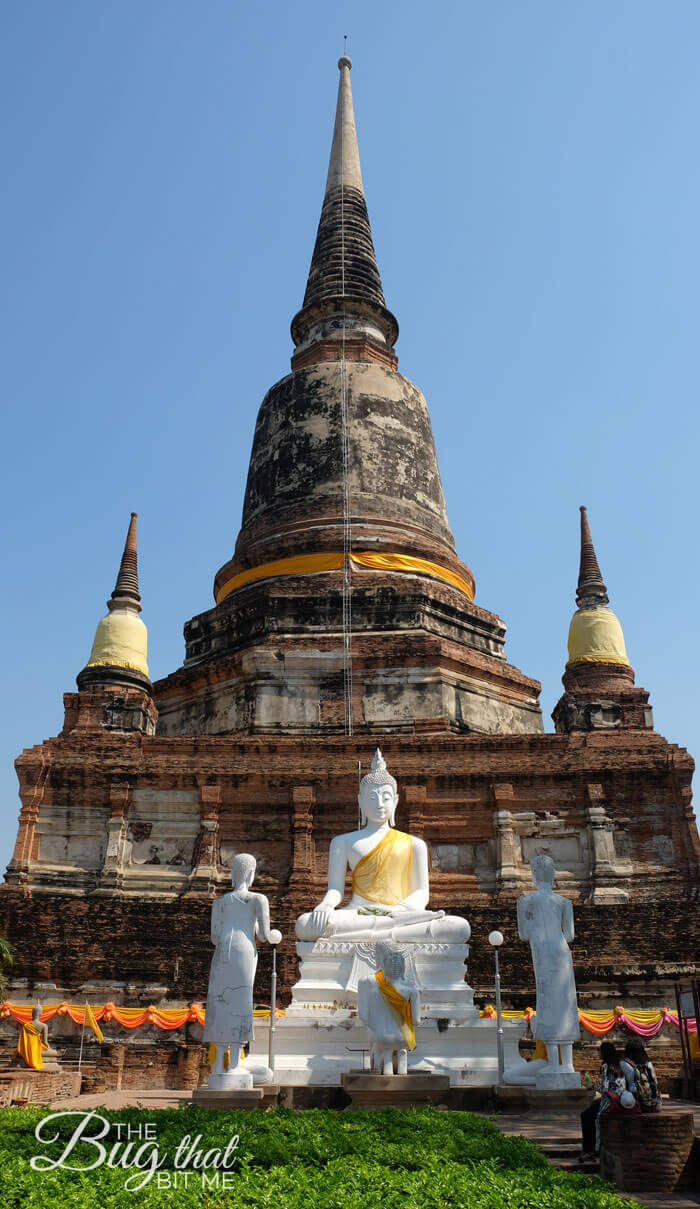
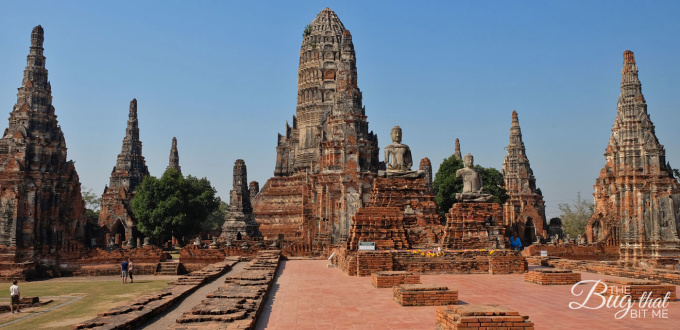

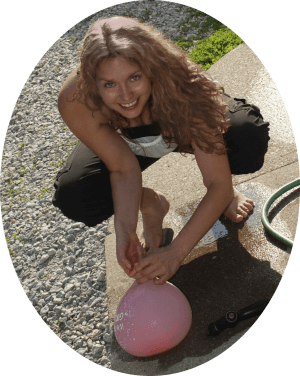


Wonderful post thank you for sharing.
Fascinating and I feel so humbled to be from a country with such a short history in comparison of where you’ve been exploring. Your photos are exceptional and can’t decide which one I like best but I do love the budda’s face tucked into the tree roots.
That photo’s a classic! I was hoping I got to see it. When photographing Buddha, you should never have your head higher than his out of respect. That was a tricky one!